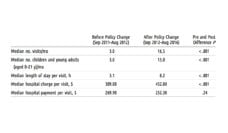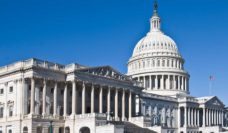In the United States, only 37 affordable rental homes are available for every 100 needy renters with extremely low incomes. This translates nationally into 11 million low-income renters facing a shortage of seven million affordable and available rental homes. Those fortunate enough to secure a lease face considerable rental burden: three in four of extremely low-income renters spend more than half of their earnings on rent and utilities.
Despite these realities, the White House’s 2020 fiscal budget for the Department of Housing and Urban Development proposes over 10 billion dollars in cuts to affordable housing programs. Of the seven programs affected by the proposed cuts, three would be completely defunded: the Community Development Block Grant, the Public Housing Capital Fund, and the HOME Investment Partnerships Program.
The Community Development Block Grant affords communities the resources needed to rehabilitate abandoned homes, expand local economic opportunities, and finance large-scale physical development projects to revitalize neighborhoods. Similarly, the Public Housing Capital Fund supports the development, financing, and modernization of public housing projects.
The HOME Investment Partnerships Program provides direct rental assistance to low-income individuals. The program acts as a critical source of financing for developing affordable rental housing. This is particularly useful because decades of economic growth across various sectors has increased demand and supply of high-end apartments and single-family homes. But development of new affordable housing for low- and moderate-income renters has lagged.
Lack of affordable housing puts households at greater risk of housing instability, evictions, and homelessness. The proposed budget cut ultimately raises the question: a better budget for whose America?
The Trump administration claims that the proposed 2020 Budget for a Better America “reflects the president’s commitment to fiscal discipline by reforming programs to promote work and self-sufficiency and focusing support on critical cost-effective programs that assist vulnerable households.” This justification is disingenuous. The Budget for a Better America essentially blames low-come individuals for their poverty. Trump bolsters the false narrative that people who are economically disadvantaged are lazy, leeching public assistance, and underserving of public housing benefits. Based on this logic, defunding such programs forces individuals to become more industrious and thus promotes work and self-sufficiency.
The proposed budget cuts and the underlying rationale that such cuts promote self sufficiency overemphasize jobs and fail to account for factors beyond employment (level of education and health) that perpetuate poverty. In fact, a recent study from the Urban Institute found that, despite a rise in employment and an increase in real wage growth, many families are still unable to meet their basic needs. In 2018, approximately 4 in 10 adults under the age of 65 struggled or were unable to pay for housing, utilities, food, or medical care at some point during the year.
The White House’s 2020 fiscal budget claims to encourage a greater role for private sector investment in affordable housing. Such claims discount the reality that the rising cost of land, materials, and construction have discouraged development of affordable rental units.
Lack of affordable housing puts households at greater risk of housing instability, evictions, and homelessness. The proposed budget cut ultimately raises the question: a better budget for whose America?
Photo by Cameron Watkins on Unsplash














